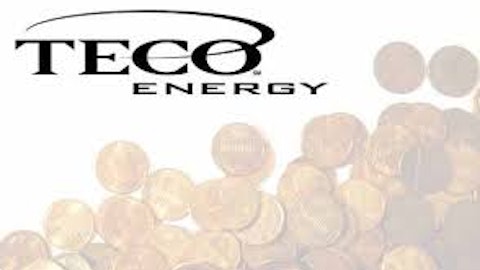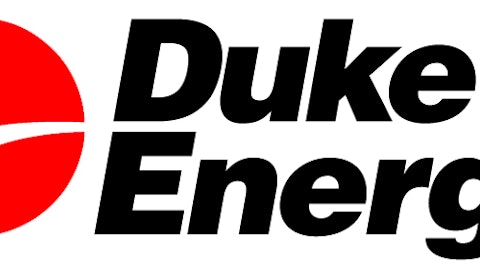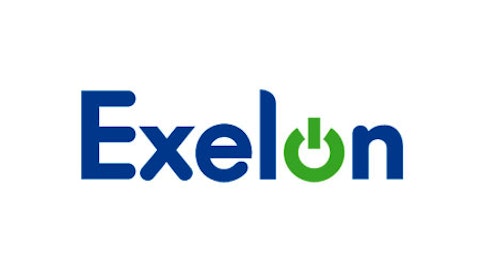
Until recently, Consolidated Edison, Inc. (NYSE:ED) was arguably one of those stocks that made the Aristocrats list on a technicality, as it had made minimal half-penny increases in its quarterly payout for more than 15 years. But this past year, the utility boosted its dividend by a full penny, and while that’s small, it could be significant in signaling an acceleration of its dividend increases. Let’s take a closer look at Consolidated Edison, Inc. (NYSE:ED) to see whether this faster dividend growth is likely to continue.
Dividend stats on Consolidated Edison
| Current Quarterly Dividend Per Share | $0.615 |
| Current Yield | 4.3% |
| Number of Consecutive Years With Dividend Increases | 39 years |
| Payout Ratio | 68% |
| Last Increase | February 2013 |
Source: Yahoo! Finance. Last increase refers to ex-dividend date.
What’s happening with Consolidated Edison?
Consolidated Edison, Inc. (NYSE:ED) gets almost all of its earnings from its regulated utility business, with its Con Edison of New York subsidiary representing the biggest portion of that segment. Regulated utilities tend to have limited growth prospects, but the trade-off is that they also bring greater stability. For its part, ConEd’s regulated subsidiary expects modest 1.3% annual growth in electricity consumption, but faster growth of 4.3% for natural gas reflects homeowners’ moves to update heating-oil furnaces to take advantage of lower natural-gas prices.
But the big question that Consolidated Edison, Inc. (NYSE:ED) faces is whether it can continue to rely on its old-fashioned regulated business to produce profits. Increasingly, slowing energy use and decaying infrastructure are forcing utilities to make larger investments in improvements like smart-grid technology as well as building up a renewable energy portfolio for production purposes. Exelon Corporation (NYSE:EXC), for instance, has spent more than $14 billion over the past decade on smart-grid initiatives and other infrastructure upgrades.
Consolidated Edison, Inc. (NYSE:ED) is prepared for similar investments, with expectations of spending $2.4 billion this year on capital expenditures, $100 million of which will go toward natural-gas upgrades, trying to jump onto the oil-to-gas conversion bandwagon. But the danger is that spending too much on capital expenditures could jeopardize the dividend. Both Exelon Corporation (NYSE:EXC) and Atlantic Power Corp (NYSE:AT) have slashed their payouts to shareholders recently, although their pre-cut dividend yields were much higher than ConEd’s more modest yield in the 4% range.
ConEd has taken steps toward bolstering its non-regulated business, entering into a partnership with Sempra Energy (NYSE:SRE) to take 50% ownership of two of Sempra’s solar farms in Nevada and Arizona. Still, one consequence of moving toward deregulated opportunities is that they can create more volatility in earnings, which could make it harder for ConEd to feel comfortable with future dividend hikes.

Consolidated Edison Dividends data by YCharts.
ConEd’s flattish stair-step dividend history got a little steeper from the company’s full-penny increase, but dividend growth of 1.7% nevertheless remains sluggish and reflects the uncertainty in the industry. Combined with rising interest rates that will eventually increase debt financing costs, ConEd will once again have to demonstrate its ability to get through tough times.
When will Consolidated Edison boost its payout?
With ConEd having raised its dividend in February, it’s unlikely that investors will see another increase before 2014. It’s more important for investors to keep their eyes open to make sure they’ll get that increase, so be on the lookout during quarterly earnings reports at any strategic moves that could use cash flow that would otherwise be destined for dividend payments. Those could be your only early warnings of a potential dividend cut, even though the utility will likely take all steps possible to prevent losing its hard-won Dividend Aristocrat status.
The article This Utility’s Dividend Growth Is Accelerating, but Can It Last? originally appeared on Fool.com and is written by Dan Caplinger.
Fool contributor Dan Caplinger has no position in any stocks mentioned. You can follow him on Twitter @DanCaplinger. The Motley Fool recommends Exelon.
Copyright © 1995 – 2013 The Motley Fool, LLC. All rights reserved. The Motley Fool has a disclosure policy.





